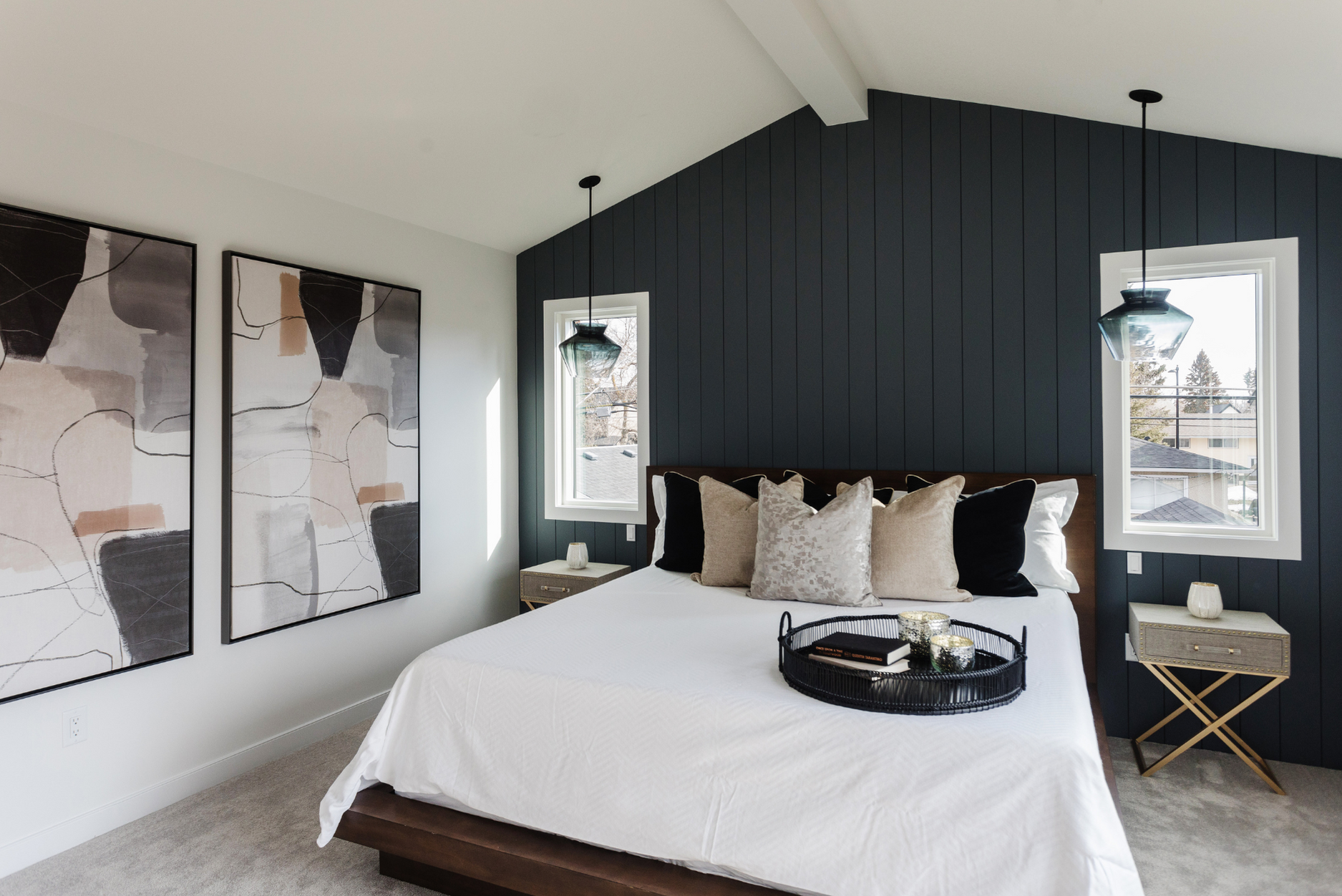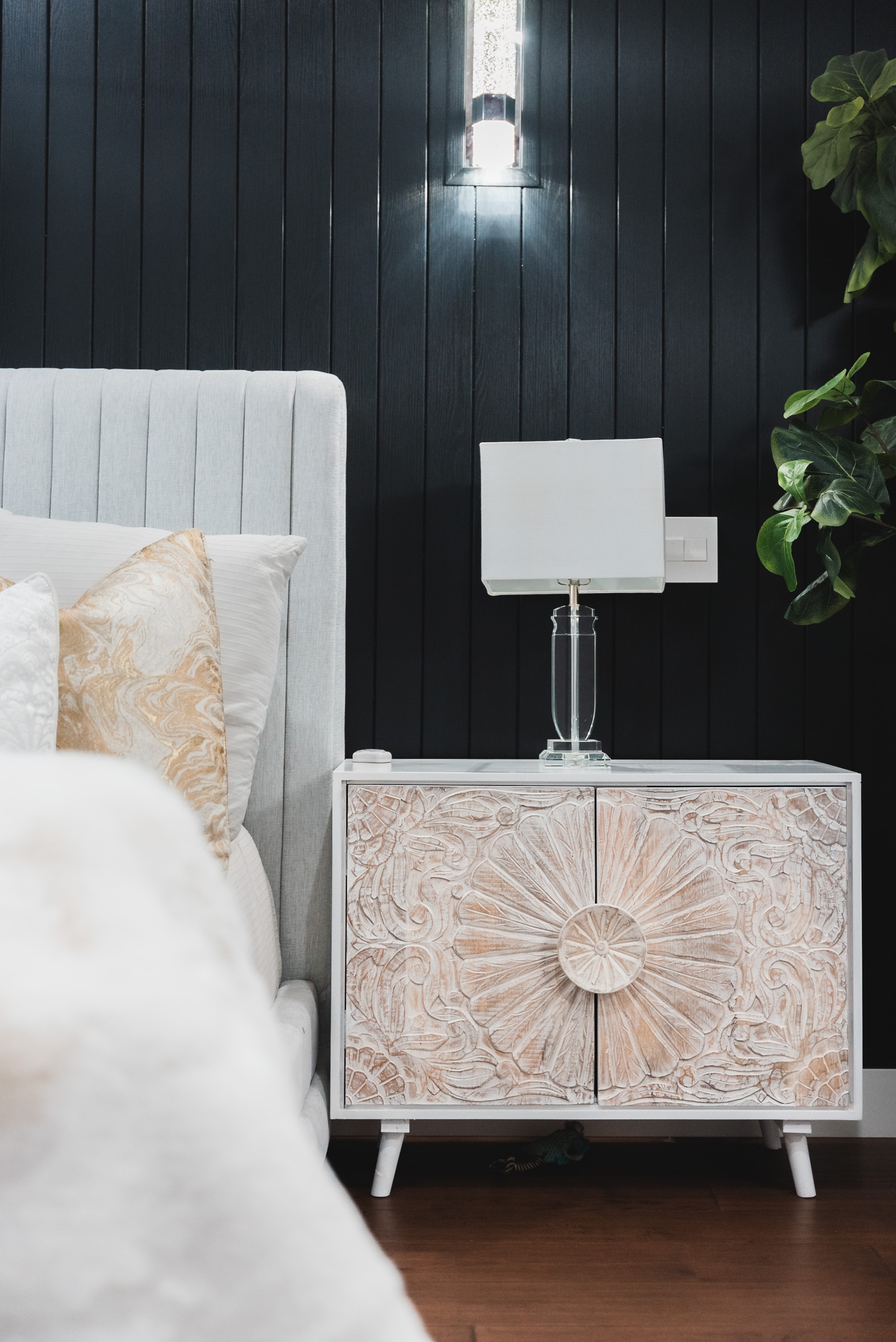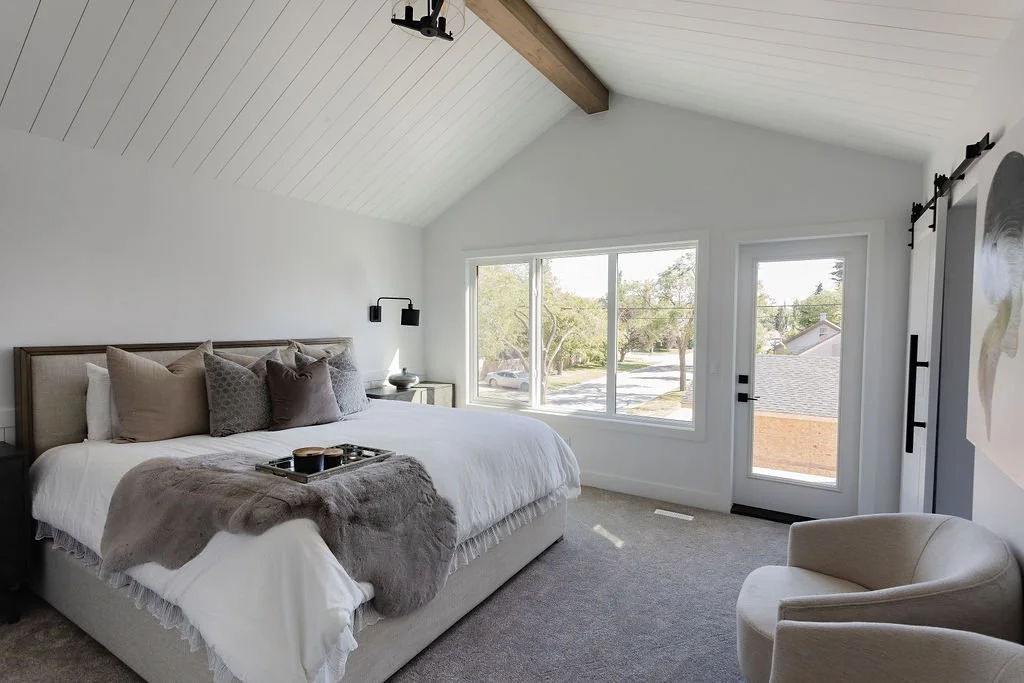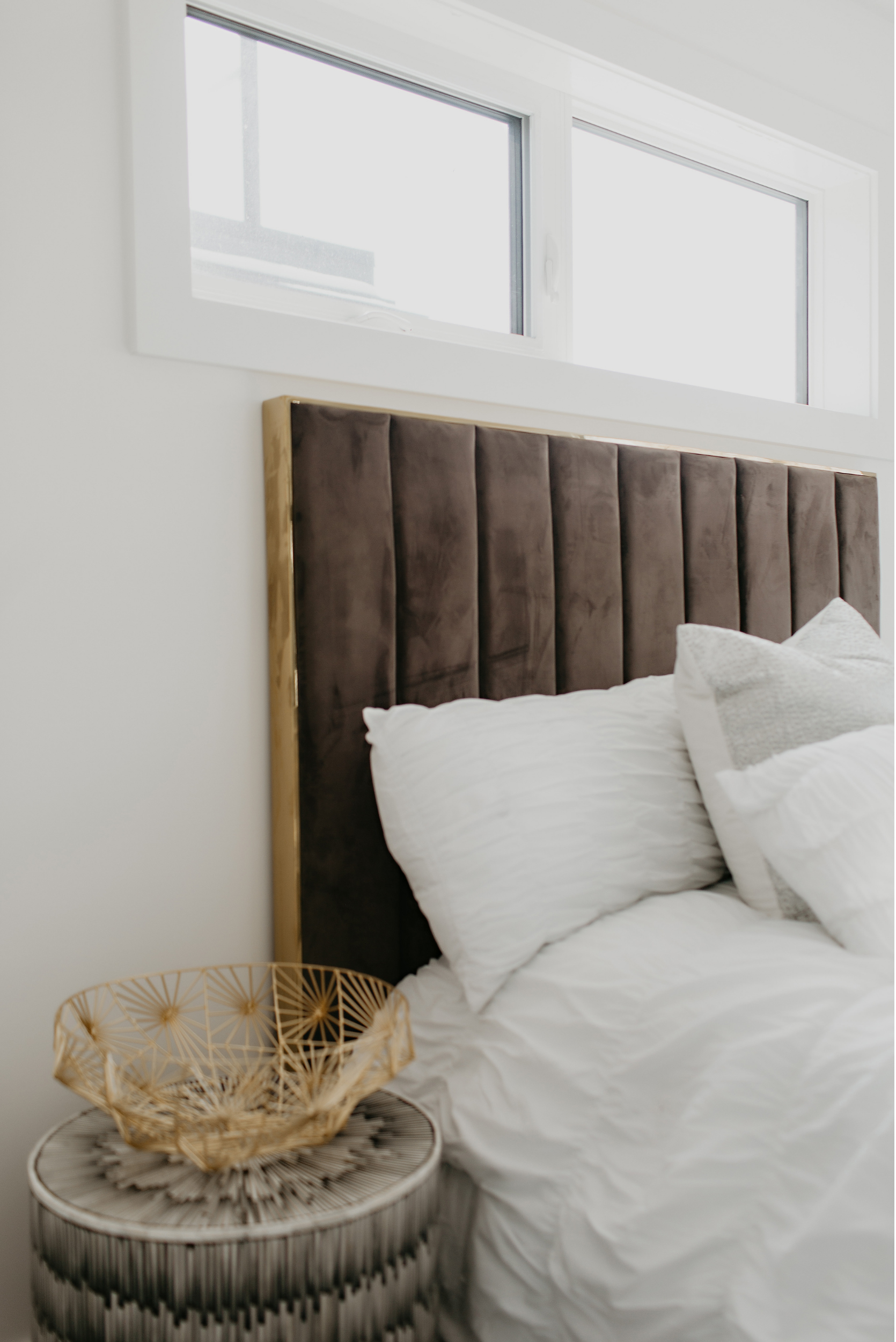How to Arrange Bedroom Furniture for Perfect Flow
Creating the right bedroom setup can be trickier than it looks. Furniture placement doesn’t just decide how your space looks. It affects how you sleep, how you move around the room, and even how calm the atmosphere feels. Many people wonder about how to arrange bedroom furniture so the room feels stylish and practical at the same time. The good news? With a few smart strategies, you can achieve both form and function, no matter the size or shape of your bedroom.
How to Arrange Bedroom Furniture: The Basics
When it comes to arranging bedroom furniture, the goal is always comfort, flow, and functionality. Start by thinking about your room as a whole rather than just individual pieces. The bed should be the first thing you decide on since it sets the tone for everything else.
From there, place supporting pieces like nightstands, dressers, or seating in a way that keeps walkways clear and makes the room easy to use. The basics are simple: give yourself space to move, avoid blocking windows or doors, and let the room feel balanced instead of crowded.
Even if you only have a few pieces of furniture, how you arrange them can make the room feel bigger or smaller. A bed pushed into the wrong corner might limit natural light, while a dresser angled slightly differently could improve flow instantly.
Why Your Bedroom Layout Matters More Than You Think
The way you place furniture in your bedroom does more than decide where things sit. A good layout makes the room feel open and peaceful, while a poor one can leave you bumping into corners or feeling cramped. Bedrooms are personal spaces, so their flow has a direct effect on how well you relax. This is why designers spend so much time thinking about bedroom layouts and how they influence daily life.
Think of your layout as setting the stage for your daily routines. Do you want to roll out of bed and walk straight to your closet? Or do you prefer having an open space to stretch before starting your day? Mapping these habits into your furniture layout makes your bedroom work harder for you.
Placing the Bed First: The Golden Rule of Bedroom Design
The bed is always the starting point of a well-designed room. Position it on the largest wall without doors or windows whenever possible. Not only does this create balance, but it also helps anchor the rest of the space.
If your bedroom has unusual proportions or an awkward, small bedroom layout, try centering the bed in a way that still leaves enough walking room on both sides. Once the bed is placed, everything else naturally falls into place around it.
If your room is really small, a bed with built-in storage drawers underneath can also eliminate the need for an extra dresser, freeing up space. Loft-style beds are another creative solution, especially for teens or compact apartments where every inch counts.
Nightstands, Dressers, and Storage That Make Sense
Once the bed is set, it’s time to add in nightstands and dressers. Nightstands bring symmetry and convenience, giving you a spot for lamps, books, or water. Dressers should be positioned across from or beside the bed, depending on space.
If you plan to include a TV, the dresser can double as a media console. Storage should be chosen to match your lifestyle: tall pieces for small rooms, or longer, lower dressers for larger spaces. These practical pieces turn your furniture arrangement into a functional setup.
Don’t underestimate the impact of hidden storage. Ottomans at the foot of the bed, baskets under nightstands, or wall-mounted shelving units can keep clutter tucked away while still making the room stylish.
Master Bedroom Layout Tips for Larger Spaces
A master suite gives you more room to play with. Instead of just focusing on essentials, think about adding extras like a seating area, reading nook, or vanity. A good master bedroom layout balances openness with coziness.
Placing a bench at the end of the bed or two chairs in a corner creates purpose and style. Since master bedrooms often have more windows, positioning the bed for a pleasant view can also make mornings more enjoyable.
Large bedrooms also benefit from zoning. For example, you can create a clear sleep zone, a dressing area, and even a small workspace if you work from home. Using rugs to define these areas helps break up the space while still keeping the room cohesive.
Bedroom Layouts That Work in Any Home
Not all bedrooms are large or small. Most bedrooms fall somewhere in the middle. For standard-sized rooms, focus on functionality. Keep pathways clear, place dressers on accessible walls, and make sure doors and drawers open easily. These bedroom layouts are all about balance, with enough furniture to feel complete but not so much that the room feels cramped.
How to Fix an Awkward Small Bedroom Layout
Challenging rooms with sloped ceilings, narrow corners, or strange window placements often frustrate homeowners. But an awkward, small bedroom layout can be fixed with creativity. Floating shelves instead of bulky nightstands, under-bed storage, or diagonal bed placement can solve tricky design problems. Sometimes custom furniture is the smartest investment, especially if the space is unusually shaped.
Bedroom Arrangement Ideas to Inspire Your Setup
If you’re unsure where to start, look for bedroom arrangement ideas in design magazines, online galleries, or by working with a designer. Inspiration often comes from seeing what’s possible in other homes. A simple change, like shifting the bed or repositioning a dresser, can completely alter how your bedroom feels. Don’t be afraid to experiment. Sometimes, trial and error leads to the best results.
Smart Bedroom Configuration Ideas for Everyday Living
The best bedroom configuration ideas are the ones tailored to your lifestyle. Do you need a quiet corner for reading or working? Do you want a minimalist setup with only the essentials? Or do you prefer a layered look with more décor? Thinking about how you’ll actually use the space makes furniture placement easier. Function should guide form, not the other way around.
Decor Ideas for Small Bedrooms That Maximize Space
Styling a small room requires intention. The best decor ideas for small bedrooms include keeping colours light and airy, adding mirrors to reflect light, and using vertical shelving to free up floor space. A bold rug or statement wall art can draw attention and make the room feel stylish without overwhelming it.
Bedroom Decor Ideas for Small Spaces With Big Impact
When space is tight, every detail counts. Bedroom decor ideas for small spaces often revolve around minimalism: choosing fewer pieces, but making them impactful. A well-placed lamp, a textured throw, or layered bedding can transform the atmosphere. Keeping clutter out of sight also helps make a small bedroom feel larger.
Cozy Bedroom Ideas for a Relaxing Retreat
Creating a bedroom that feels like a personal sanctuary is all about coziness. Layered bedding, soft lighting, and natural textures are classic cozy bedroom ideas that make a big impact. Even larger spaces can benefit from cozy touches, like adding rugs for warmth or curtains that soften the room.
Cozy Bedroom Decor Ideas That Add Warmth
Personalization is what makes a space feel like home. With cozy bedroom decor ideas, you can add character through framed art, candles, or plants. Soft textiles such as knitted throws or velvet cushions instantly change the feel of the room. These touches don’t just add comfort, they bring warmth and personality.
Cozy Bedroom Design Ideas That Feel Modern
For those who want comfort without sacrificing style, cozy bedroom design ideas can lean modern. Upholstered headboards, sleek lamps, and muted tones keep the look fresh while still inviting. This balance between coziness and contemporary design creates a space that feels both polished and relaxing.
Modern Bedroom Furniture and Today’s Sleeping Room Design
Finally, think about the furniture itself. Choosing modern bedroom furniture can instantly update your room. Platform beds, floating nightstands, and streamlined dressers reduce visual clutter and make your space look bigger. Pair these with a modern sleeping room design that values simplicity, functionality, and clean lines. Even in smaller spaces, modern furniture can make the room feel more open and intentional.
Conclusion: Arrange Your Bedroom for Comfort and Style
Learning how to arrange your bedroom furniture is less about rules and more about finding what works for your lifestyle. Start with the essentials, keep pathways open, and then layer in the décor that makes the room feel personal. Whether you’re working with a master suite, a small bedroom, or an awkward layout, the right arrangement creates harmony and balance.
If you want professional guidance, a trusted Edmonton interior designer like Tailored Interior can help you design a space that blends comfort, beauty, and function. With the right expertise, even the trickiest bedroom can become a restful retreat.
Remember, your bedroom isn’t just where you sleep; it’s the one place in your home designed purely for rest and reset. Making intentional furniture choices means you’ll create not just a pretty room, but a space that supports your well-being every single day.
FAQs About Bedroom Furniture Arrangement
What’s the first step in arranging bedroom furniture?
Always start with the bed, since it’s the main focal point. From there, add other furniture while keeping balance and pathways in mind.
How do I make a small bedroom feel bigger?
Use mirrors, light colours, and storage solutions that don’t crowd the space. Keeping décor minimal but impactful also helps.
How can I make my bedroom cozier with furniture placement?
Pull furniture closer together, add soft lighting, and layer in textiles like rugs, throws, and pillows for warmth.
What’s the best way to handle an awkward layout?
Consider floating shelves, modular furniture, or custom solutions. Sometimes, placing the bed diagonally can fix unusual room shapes.
Is modern furniture good for small bedrooms?
Yes. Modern pieces usually have clean lines and lower profiles, which make tight spaces feel more open and less cluttered.








